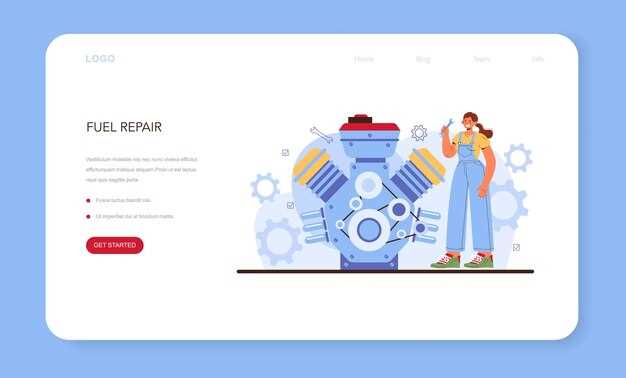
In the world of automotive engineering, turbochargers play a crucial role in enhancing engine performance. By forcing more air into the combustion chamber, these devices significantly boost an engine’s power output without increasing its size or weight. However, while the benefits of turbocharging are substantial, it is essential to also consider the potential downsides associated with this technology.
The primary advantage of turbochargers lies in their ability to improve fuel efficiency. By allowing smaller engines to produce more power, turbochargers can offer the same or even superior performance compared to larger naturally aspirated engines. As a result, vehicles equipped with turbocharged engines often exhibit better mileage, making them more environmentally friendly and cost-effective for consumers.
Conversely, there are drawbacks to this innovative technology. Turbo lag, the delay between when the driver accelerates and when the turbocharger delivers its expected boost, can be frustrating for drivers seeking immediate responsiveness. Additionally, the complexity of turbocharged systems can lead to increased maintenance costs and potential reliability issues over time.
Understanding both the advantages and disadvantages of turbochargers is essential for consumers and enthusiasts alike. By weighing these factors, one can make informed decisions about vehicle purchases, performance upgrades, and engine maintenance.
Benefits of Boost: How Turbochargers Enhance Engine Performance

Turbochargers significantly contribute to enhancing engine performance by providing a boost of power while maintaining fuel efficiency. Their design allows for a more effective utilization of exhaust gases, resulting in numerous advantages.
-
Increased Power Output: Turbochargers compress the air entering the engine, allowing for more fuel to be burned. This increase in air-fuel mixture leads to a notable rise in horsepower and torque.
-
Improved Fuel Efficiency: By using exhaust gases to generate more power, turbochargers enable smaller engines to perform at levels comparable to larger engines. This leads to better fuel economy without sacrificing performance.
-
Lower Emissions: Enhanced combustion from turbocharging means more complete burning of fuel, which can reduce harmful emissions compared to naturally aspirated engines. This is increasingly important in meeting environmental regulations.
-
Better Performance at High Altitude: Turbochargers compensate for the lower air density found at higher altitudes, maintaining engine performance where normally aspirated engines might struggle.
-
Enhanced Responsiveness: Modern turbochargers are designed for quick spool-up, providing immediate boost and minimizing lag. This responsiveness contributes to a more dynamic driving experience.
-
Compact Engine Design: With turbocharging, manufacturers can design smaller yet more powerful engines, freeing up space in the vehicle for other components or allowing for lighter overall weight.
In summary, the benefits of turbochargers extend beyond mere power enhancement. They play a crucial role in improving fuel efficiency, reducing emissions, and providing a responsive driving experience, making them a favored choice in modern automotive engineering.
Common Drawbacks: Maintenance and Reliability of Turbocharged Systems
Turbocharged systems are known for their ability to significantly boost engine performance and efficiency. However, they also come with their own set of drawbacks, particularly concerning maintenance and reliability. Understanding these aspects is crucial for car owners and enthusiasts alike.
One major concern with turbochargers is the increased complexity of the engine system. Turbocharged engines typically incorporate additional components, such as intercoolers, wastegates, and oil lines, which can complicate both repairs and routine maintenance. This complexity may lead to higher service costs and longer repair times due to the need for specialized knowledge and tools.
Additionally, turbochargers generate substantial heat during operation, which can result in substantial wear and tear on engine components. If proper maintenance is not adhered to, this heat can lead to premature degradation of the turbocharger itself, as well as other parts of the engine. Regular oil changes and checks are essential, as oil is crucial for lubricating the turbo and preventing damage from heat buildup. Neglecting these maintenance tasks can drastically reduce the reliability and lifespan of the turbocharged system.
Another issue relates to the potential for turbo lag, a brief delay before the turbocharger provides the expected boost. Although advancements in turbocharger technology have minimized this drawback, it can still be a concern, particularly for drivers who prioritize immediate power delivery. In some cases, the lag may lead to inconsistent performance, causing frustration and a lack of confidence in the vehicle’s responsiveness.
Furthermore, the dependability of a turbocharged system can be compromised by the quality of the fuel used. Turbo engines often require high-octane fuels to run efficiently and safely. Using lower-quality fuel can lead to knocking, which adversely affects both the turbo and engine performance. Owners must be vigilant about fueling practices to maintain optimal operation.
In conclusion, while turbocharged systems offer significant advantages, the attention required for maintenance and reliability cannot be overlooked. The complexity, heat management, potential turbo lag, and fuel quality all play critical roles in the long-term dependability of these systems. Proper awareness and proactive measures are essential for maximizing the benefits while mitigating the drawbacks associated with turbochargers.
Turbocharger Selection: Key Factors for Optimal Vehicle Application

Selecting the right turbocharger is crucial for achieving the desired boost levels and maximizing engine performance. Several key factors should be considered during the selection process to ensure that the turbocharger is well-suited for the specific vehicle application.
Firstly, it is essential to assess the engine’s displacement and configuration. Turbochargers are designed to work efficiently with engines of varying sizes, and matching the turbo size to the engine displacement is vital. A turbocharger that is too small may not provide adequate boost at higher RPMs, while an excessively large turbo can lead to turbo lag and inefficiency at lower RPMs.
Next, the intended use of the vehicle must be taken into account. For example, a turbocharger intended for a performance-oriented application will differ from one designed for towing or off-road use. Understanding the vehicle’s usage helps in selecting a turbo that can deliver the necessary power and response characteristics without compromising reliability.
Another key factor is the boost pressure. Different engines have varying tolerances for boost levels, influenced by their design and materials. Careful consideration of the maximum allowable boost is critical to prevent engine damage. Additionally, the selected turbocharger should be capable of delivering this boost effectively and efficiently.
The efficiency rating of the turbocharger is also an important consideration. Utilizing a turbocharger with high thermal efficiency can result in better fuel economy and reduced exhaust temperatures. High-efficiency units allow for higher boost levels without significant heat build-up, enhancing overall engine performance.
Lastly, the compatibility of the turbocharger with the vehicle’s existing engine management system is essential. Proper tuning is required to optimize the performance and efficiency of the turbocharged engine. Ensuring that the vehicle’s ECU can support the added complexity of a turbocharged setup will facilitate better boost control and engine management.



